Captain Anthony Starkey - Master of the S.S. TORRINGTON
, 6 May 2016
The National Waterfront Museum’s current exhibition Forget me not: Postcards from the First World War features a fantastic selection of all types of postcards from the industry & transport, and social & cultural history collections. One case tells the amazing, but tragic, story of Captain Anthony Starkey of the S.S. Torrington.
Captain Anthony Starkey was master of the S.S. Torrington. The ship was built in 1905 by William Doxford & Sons of Sunderland and was owned by the Tatem Steam Navigation Company of Cardiff.
Page from the scrap album showing stamps and some theatre tickets for entertainment in the POW camps.
On 8 April 1917 the ship was sailing from Italy to Cardiff to load coal for the Italian railways. Shortly after 11.30am she was torpedoed by a German submarine, 150 miles off the Isles of Scilly. The torpedo hit forward of the bridge. A submarine then surfaced and opened fire on the ship. Capt. Starkey ordered his men into the lifeboats, but the submarine came alongside. Capt. Starkey was ordered below deck of the U-boat, which he did thinking he could save his men. Some of the crew went on the deck of the U-boat, whilst others remained in a lifeboat. The captain of the U-boat then ordered the vessel to dive remarking that “the others could swim”. Through the submerging of the U-boat about 20 member of the Torrington’s crew were washed off and killed. The remaining crew in the lifeboat were never heard of again. In total thirty four members of the crew were killed and Capt. Starkey was the only survivor.
Newspaper cuttings describing the events of 8th April 1917.
Capt. Starkey was held prisoner aboard the submarine for fifteen days. He was then held in four different prisoner of war camps in Germany, including Brandenburg, Holminden, and Strohenmoor. Prisoners were poorly treated in these camps, and Capt. Starkey commented that “We would have starved if it had not been for the food we received from home. We were there for two months and a half on German rations and looked like shadows when the time was up. Then food began to arrive from home and we certainly enjoyed that. The food in the camps was always potato soup, not always good potatoes, cabbage soup and some bread.”
Photograph from the scrap album showing meal time at one of the POW camps. Probably serving the potato or cabbage soup Capt. Starkey mentions.
During his time in the various prisoner of war camps Capt. Starkey put together a ‘scrap album’. This album contains over 55 postcards and photographs, along with German bank notes, and documents such as ration cards, camp theatre tickets, letters and telegrammes. Some of these photographs show everyday life in the camps, such as meal times and entertainment. This album in on display in the current exhibition, along with other photographs, and two newspaper cuttings pasted onto the back board of another scrap book. These describe the whole story in detail.
Photograph sent home to Mrs Starkey of Cardiff. Capt. Starkey is standing at left, and is at the POW camp of Brandenburg, near Berlin.
Page from scrap album showing German bank notes, and a photograph of some of the entertainment. Page from the scrap album showing stamps and some theatre tickets for entertainment in the POW camps. Newspaper cuttings describing the events of 8th April 1917.
Forget me not: Postcards from the First World War runs until 19 June 2016 at the National Waterfront Museum.
To discover more about the First World War collections at Amgueddfa Cymru view this online catalogue.
Mark Etheridge
Curator (Industry & Transport)
Follow us on Twitter - @IndustryACNMW

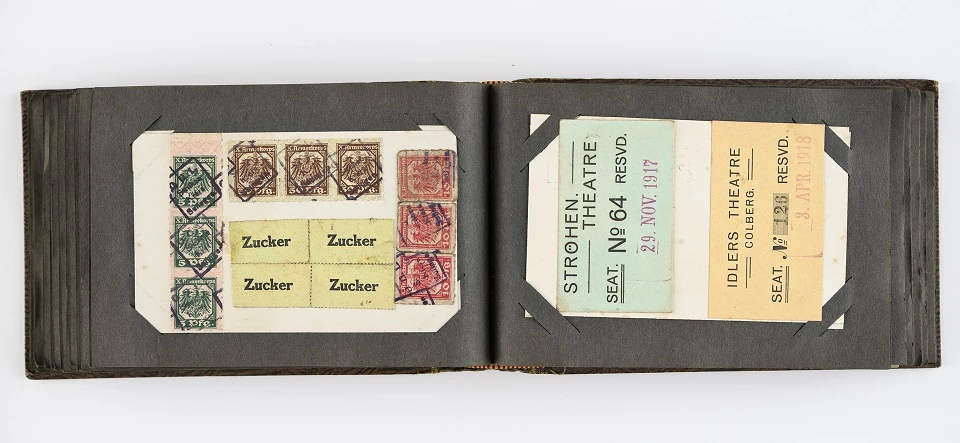
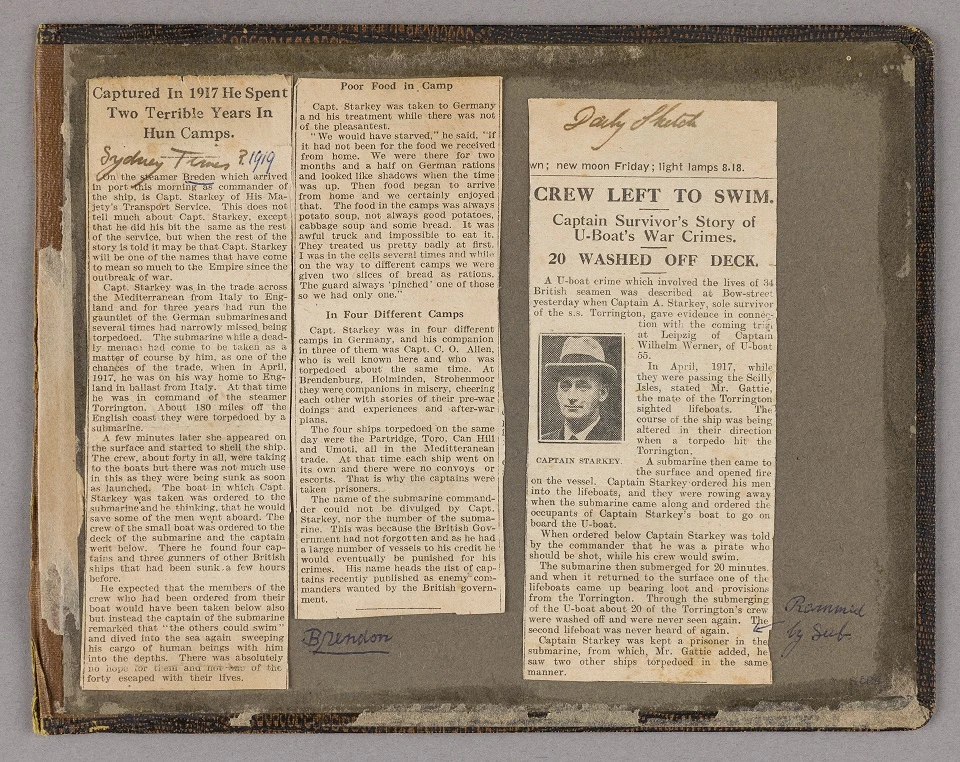
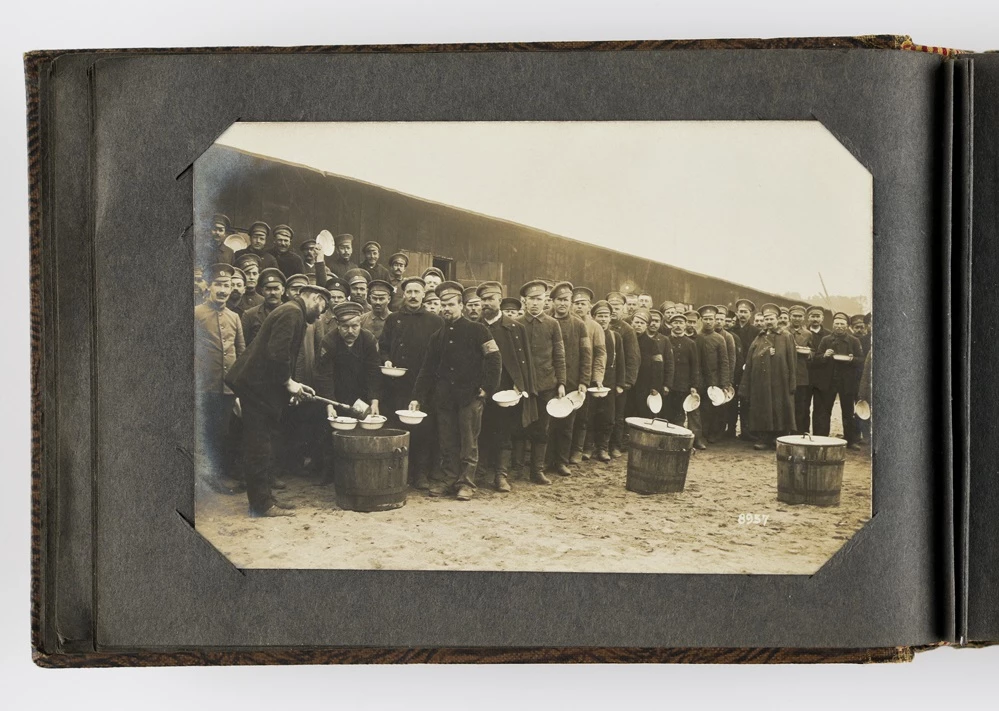
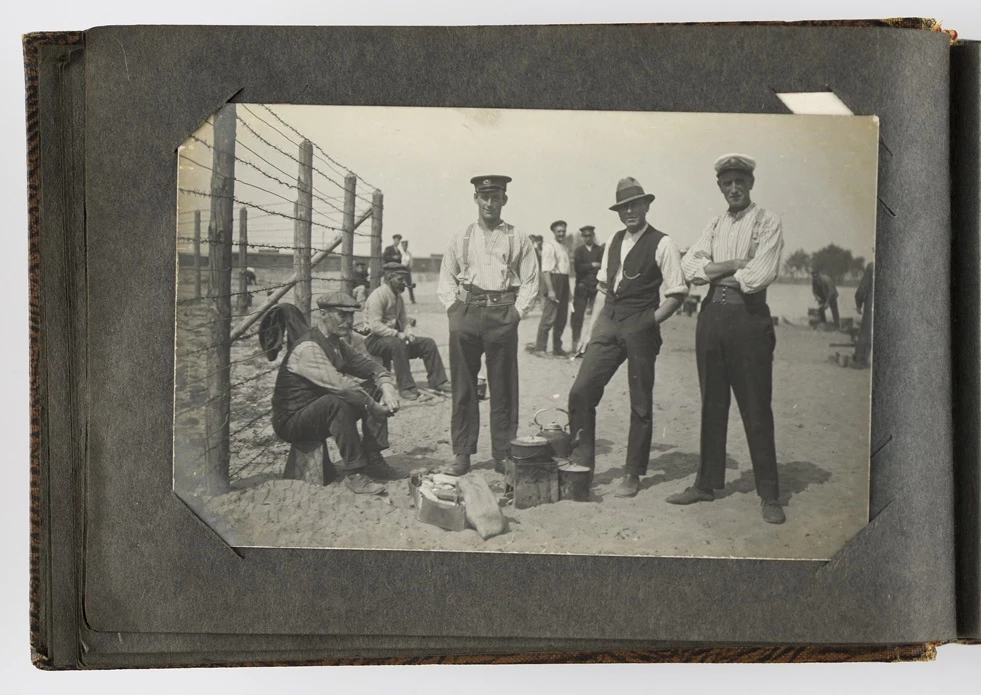
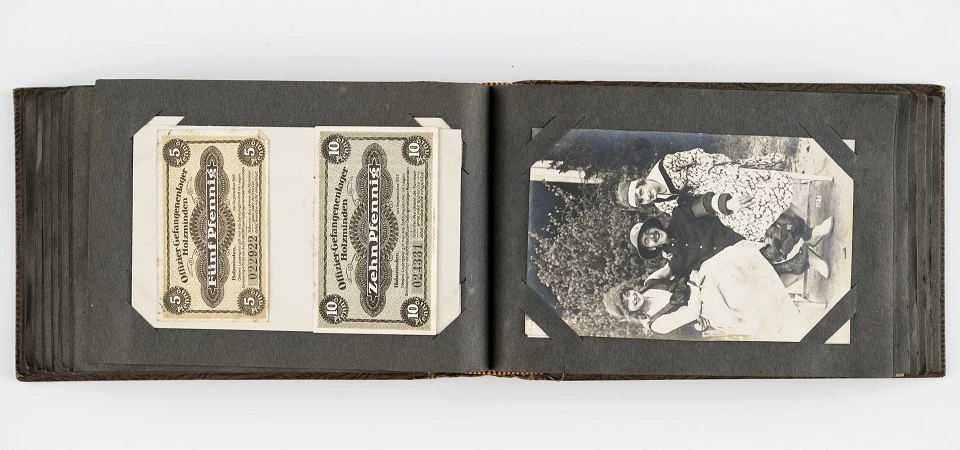
Comments - (2)
Hi Will,
Thank you for your comment, and for making the link between this ship and her First Officer - I will be sure to keep an eye out for this headstone when I'm next at the Cathedral.
Sara
Digital Team
I looked on the war graves website and found that he was a first officer on board the SS Torrington.
My google search of the SS Torrington led me to your brilliant but tragic story of Captain Starkey .